USF expands its heat illness research
It’s one of the hottest summers in Florida. As the temperature rises, so does the risk for athletes.
Under the piles of padding and hard helmets, athletes or others working in the high heat and humidity put themselves in danger of heat illness. If unchecked, the body’s inability to cool itself can lead to potentially life-threatening heat stroke, the severest form of heat illness.
“If we can start to identify those athletes, those kids, those workers … before they get into real trouble,” said USF Health’s Dr. Eric Coris, director of Primary Care Sports Medicine. “Maybe we can prevent some morbidity, sickness, or mortality, death.”
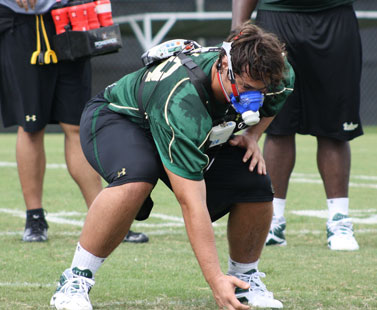
In general, Dr. Coris says, the bigger the players the hotter they get. Defensive and offensive linemen appear to be at more risk than quarterbacks and receivers. The researchers want to find out why.
This year, Dr. Coris – collaborating with Dr. Douglass Casa from the University of Connecticut and Dr. Ollie Jay from the University of Ottawa – has used some new technology to help predict which players are at most risk for heat illness. The researchers worked with athletic training staff and volunteers from the University of South Florida Bulls football team.
“We’re trying to get at the underlying question – which is what can we do to prevent these young kids from getting sick or dying of heat stroke on the field?” said Dr. Coris, associate professor of family medicine and orthopaedics and sports medicine.
With funding from NFL Charities, the foundation of the National Football League, the researchers used several different tools to measure players’ physiological responses to rising temperatures during strenuous exercise – both in a controlled heat chamber and on the playing field during preseason practices.
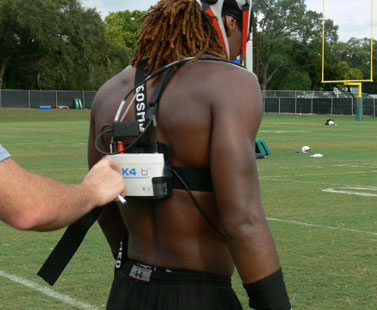
A portable metabolic analyzer device strapped to the back measures how quickly the player uses oxygen during exertion in heat and humidity.
The research started about five years ago, but this year a few new devices were added to the tiny electronic pills (basically ingestible thermometers) that players swallow before practice to monitor their internal body temperature. These include sensors on the skin to assess sweat concentrations and vests with built-in GPS systems to measure workload – the movement and acceleration of athletes playing different positions on the field. An oxygen mask with a portable device strapped to players’ backs analyzed how much energy they expended during specific drills.
“We’re trying to come at it at from as many angles as we can,” Dr. Coris said.
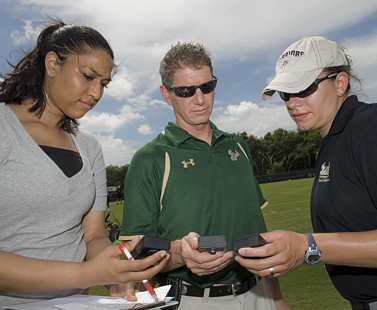
Dr. Eric Coris, director of Primary Care Sports Medicine, checks portable monitoring devices with a USF MD graduate and Rebecca Lopez (right), PhD, ATC-L, a member of the SMART Athletic Training Education Program at USF.
The researchers have begun examining how all the data they collected relates back to the players’ internal body temperature and physical symptoms such as fatigue, nausea and cramps. They hope their findings will tell them who is more prone to heat illness and why.
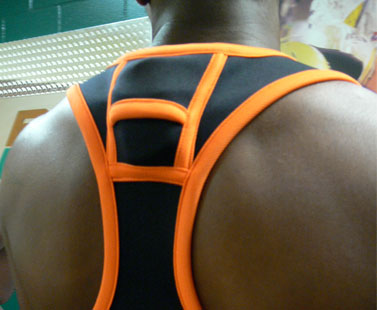
A vest worn by players holds a GPS device (below) that measures the player’s speed and acceleration (workload) during practice drills.
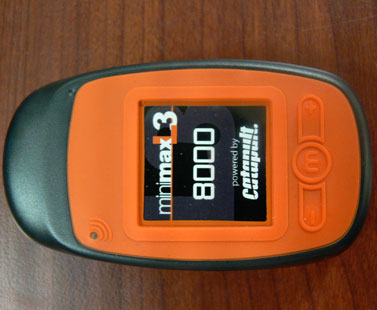
Video/story by Amy Mariani of USF Health Communications; photos courtesy of The Korey Stringer Institute, University of Connecticut
Photo of Dr. Coris by Eric Younghans, USF Health Communications
Anne DeLotto Baier contributed to the story

